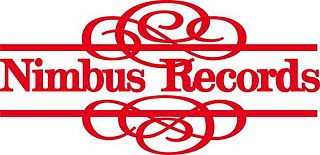
A head-related transfer function (HRTF) is a response that characterizes how an ear receives a sound from a point in space. As sound strikes the listener, the size and shape of the head, ears, ear canal, density of the head, size and shape of nasal and oral cavities, all transform the sound and affect how it is perceived, boosting some frequencies and attenuating others. Generally speaking, the HRTF boosts frequencies from 2–5 kHz with a primary resonance of +17 dB at 2,700 Hz. But the response curve is more complex than a single bump, affects a broad frequency spectrum, and varies significantly from person to person.

Quadraphonic sound – equivalent to what is now called 4.0 surround sound – uses four audio channels in which speakers are positioned at the four corners of a listening space. The system allows for the reproduction of sound signals that are independent of one another.

Ambisonics is a full-sphere surround sound format: in addition to the horizontal plane, it covers sound sources above and below the listener.

Surround sound is a technique for enriching the fidelity and depth of sound reproduction by using multiple audio channels from speakers that surround the listener. Its first application was in movie theaters. Prior to surround sound, theater sound systems commonly had three screen channels of sound that played from three loudspeakers located in front of the audience. Surround sound adds one or more channels from loudspeakers to the side or behind the listener that are able to create the sensation of sound coming from any horizontal direction around the listener.
Dolby Pro Logic is a surround sound processing technology developed by Dolby Laboratories, designed to decode soundtracks encoded with Dolby Surround. The terms Dolby Stereo and LtRt are also used to describe soundtracks that are encoded using this technique.
Matrix decoding is an audio technology where a small number of discrete audio channels are decoded into a larger number of channels on play back. The channels are generally, but not always, arranged for transmission or recording by an encoder, and decoded for playback by a decoder. The function is to allow multichannel audio, such as quadraphonic sound or surround sound to be encoded in a stereo signal, and thus played back as stereo on stereo equipment, and as surround on surround equipment – this is "compatible" multichannel audio.
3D audio effects are a group of sound effects that manipulate the sound produced by stereo speakers, surround-sound speakers, speaker-arrays, or headphones. This frequently involves the virtual placement of sound sources anywhere in three-dimensional space, including behind, above or below the listener.

Nimbus Records is a British record company based at Wyastone Leys, Ganarew, Herefordshire. They specialise in classical music recordings and were the first company in the UK to produce compact discs.
Virtual surround is an audio system that attempts to create the perception that there are many more sources of sound than are actually present. In order to achieve this, it is necessary to devise some means of tricking the human auditory system into thinking that a sound is coming from somewhere that it is not. Most recent examples of such systems are designed to simulate the true (physical) surround sound experience using one, two or three loudspeakers. Such systems are popular among consumers who want to enjoy the experience of surround sound without the large number of speakers that are traditionally required to do so.

Wave field synthesis (WFS) is a spatial audio rendering technique, characterized by creation of virtual acoustic environments. It produces artificial wavefronts synthesized by a large number of individually driven loudspeakers from elementary waves. Such wavefronts seem to originate from a virtual starting point, the virtual sound source. Contrary to traditional phantom sound sources, the localization of WFS established virtual sound sources does not depend on the listener's position. Like as a genuine sound source the virtual source remains at fixed starting point.
MPEG Surround, also known as Spatial Audio Coding (SAC) is a lossy compression format for surround sound that provides a method for extending mono or stereo audio services to multi-channel audio in a backwards compatible fashion. The total bit rates used for the core and the MPEG Surround data are typically only slightly higher than the bit rates used for coding of the core. MPEG Surround adds a side-information stream to the core bit stream, containing spatial image data. Legacy stereo playback systems will ignore this side-information while players supporting MPEG Surround decoding will output the reconstructed multi-channel audio.
The Trifield process is a form of audio rendering in which a conventional two-channel signal is decoded to an additional number of loudspeakers, typically three in the form of a Left-Centre-Right front stage. The technique provides significant additional image stability, especially when the listener is moving or off-axis.
Ambisonic UHJ format is a development of the Ambisonic surround sound system designed to be compatible with mono and stereo media. It is a hierarchy of systems in which the recorded soundfield will be reproduced with a degree of accuracy that varies according to the available channels. Although UHJ permits the use of up to four channels, only the 2-channel variant is in current use. In Ambisonics, UHJ is also known as "C-Format".
Ambiophonics is a method in the public domain that employs digital signal processing (DSP) and two loudspeakers directly in front of the listener in order to improve reproduction of stereophonic and 5.1 surround sound for music, movies, and games in home theaters, gaming PCs, workstations, or studio monitoring applications. First implemented using mechanical means in 1986, today a number of hardware and VST plug-in makers offer Ambiophonic DSP. Ambiophonics eliminates crosstalk inherent in the conventional stereo triangle speaker placement, and thereby generates a speaker-binaural soundfield that emulates headphone-binaural sound, and creates for the listener improved perception of reality of recorded auditory scenes. A second speaker pair can be added in back in order to enable 360° surround sound reproduction. Additional surround speakers may be used for hall ambience, including height, if desired.

In sound recording and reproduction, audio mixing is the process of optimizing and combining multitrack recordings into a final mono, stereo or surround sound product. In the process of combining the separate tracks, their relative levels are adjusted and balanced and various processes such as equalization and compression are commonly applied to individual tracks, groups of tracks, and the overall mix. In stereo and surround sound mixing, the placement of the tracks within the stereo field are adjusted and balanced. Audio mixing techniques and approaches vary widely and have a significant influence on the final product.
The sweet spot is a term used by audiophiles and recording engineers to describe the focal point between two speakers, where an individual is fully capable of hearing the stereo audio mix the way it was intended to be heard by the mixer. The sweet spot is the location which creates an equilateral triangle together with the stereo loudspeakers, the stereo triangle. In the case of surround sound, this is the focal point between four or more speakers, i.e., the location at which all wave fronts arrive simultaneously. In international recommendations the sweet spot is referred to as reference listening point.

Equalization, or simply EQ, in sound recording and reproduction is the process of adjusting the volume of different frequency bands within an audio signal. The circuit or equipment used to achieve this is called an equalizer.
Data exchange formats for Ambisonics have undergone radical changes since the early days of four-track magnetic tape. Researchers working on very high-order systems found no straightforward way to extend the traditional formats to suit their needs. Furthermore, there was no widely accepted formulation of spherical harmonics for acoustics, so one was borrowed from chemistry, quantum mechanics, computer graphics, or other fields, each of which had subtly different conventions. This led to an unfortunate proliferation of mutually incompatible ad hoc formats and much head-scratching.
The design of speaker systems for Ambisonic playback is governed by several constraints:









